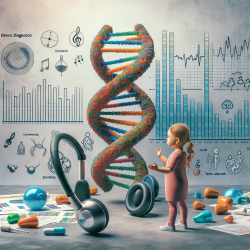Introduction
As practitioners dedicated to improving outcomes for children, understanding the environmental factors that contribute to developmental disorders is crucial. A recent study titled "Air toxics and the risk of autism spectrum disorder: the results of a population-based case–control study in southwestern Pennsylvania" sheds light on the potential link between air pollution and autism spectrum disorder (ASD). This blog aims to distill key findings from the study and encourage practitioners to integrate these insights into their practice or pursue further research.
Key Findings from the Study
The study conducted in southwestern Pennsylvania explored the association between ASD and exposure to 30 neurotoxicants, as modeled by the 2005 US EPA National Air Toxics Assessment (NATA). The researchers found significant associations between higher levels of styrene and chromium exposure during pregnancy and increased risk of ASD. Specifically, the adjusted odds ratio (OR) for styrene was 2.04 (95% CI = 1.17–3.58) in the interviewed case–control analysis and 1.61 (95% CI = 1.08–2.40) in the birth certificate (BC) analysis. Chromium also exhibited elevated ORs in both analyses.
Implications for Practitioners
These findings underscore the importance of considering environmental factors in the assessment and treatment of ASD. Practitioners can enhance their skills by:
- Incorporating environmental history into clinical assessments, asking about residential locations during pregnancy and early childhood.
- Collaborating with environmental health experts to understand local air quality issues and their potential impact on child development.
- Advocating for policies that reduce air pollution and protect vulnerable populations, including pregnant women and children.
Encouraging Further Research
While the study provides valuable insights, it also highlights the need for further research. Practitioners are encouraged to:
- Engage in interdisciplinary research to explore the mechanisms by which air toxics influence neurodevelopment.
- Participate in longitudinal studies that track environmental exposures and developmental outcomes over time.
- Contribute to the development of interventions that mitigate the effects of environmental exposures on child development.
Conclusion
Understanding the environmental contributors to ASD is a critical step in improving outcomes for children. By integrating the findings of this study into practice and pursuing further research, practitioners can play a pivotal role in addressing this public health challenge. To read the original research paper, please follow this link: Air toxics and the risk of autism spectrum disorder: the results of a population based case–control study in southwestern Pennsylvania.










